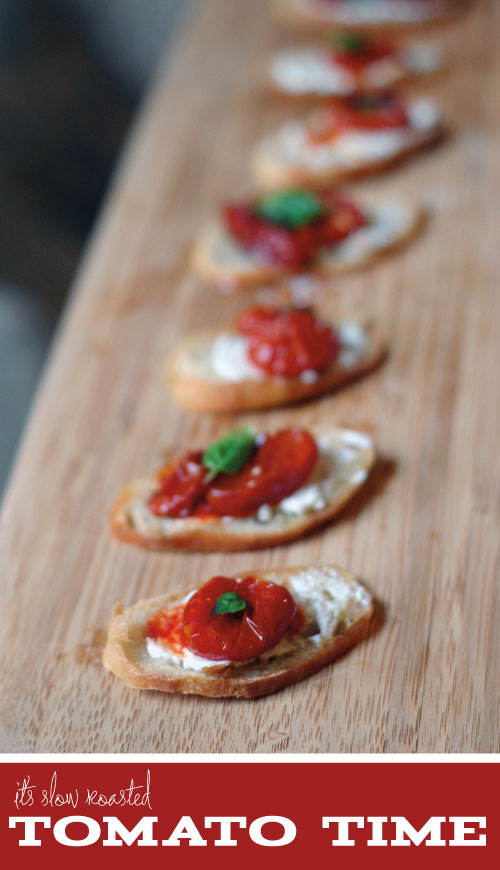 Greetings from Breckenridge! I'm here on a little get-away at our friend's beautiful home before the holiday rush begins at Haute Papier! Yesterday we went for a great hike and then visited the Summer Fun Park at the bottom of the gondola where we panned for gems. Yes, panned for gems with all of the kids. I did ask and we weren't the first adults to take part! Once we saw the gorgeous pieces of granite and quartz that the youngings were uncovering, I couldn't resist the urge to make a necklace from them.
The process was simple. I purchased some silk cording, thin gold wire and a bead to act as a fastener at the end of the necklace at the bead store in town and then went to town on wrapping our findings. I left a loop at the top of the stone to tread it onto the silk and tied little knots at the end so I could adjust the length of the necklace. Isn't it pretty?
Greetings from Breckenridge! I'm here on a little get-away at our friend's beautiful home before the holiday rush begins at Haute Papier! Yesterday we went for a great hike and then visited the Summer Fun Park at the bottom of the gondola where we panned for gems. Yes, panned for gems with all of the kids. I did ask and we weren't the first adults to take part! Once we saw the gorgeous pieces of granite and quartz that the youngings were uncovering, I couldn't resist the urge to make a necklace from them.
The process was simple. I purchased some silk cording, thin gold wire and a bead to act as a fastener at the end of the necklace at the bead store in town and then went to town on wrapping our findings. I left a loop at the top of the stone to tread it onto the silk and tied little knots at the end so I could adjust the length of the necklace. Isn't it pretty?
Make Your Own FONTS!!!
Today for Make-It Monday, I wanted to share my experiences in making your own font! For our new Bold & Beautiful line, we had to create a couple of our own fonts since some of the metal type we purchased does not have a corresponding computer font. So, to do this, we foil stamped each of our letters and then scanned them into the computer and fiddled with them as best possible in Illustrator to make them look pretty (and by pretty, I mean straight lines and the same height). This was a tedious task and the letters aren't perfect, but it will allow us to proof your orders in our foil stamp fonts to be sure you like the look before we print! Then we places all of the little letters and glyphs in the template from yourfonts.com and then clicked create font and they did the rest! It was $9.95 for their services (well worth it, if you ask me!)
Here is our first go:
And this is our new monogram font:
and my favorite (and reminiscent of my wedding reception venue):
You can make your own font here! Let us know how it goes!
Not-Your-Collage-Jello-Shot
 I'm obsessed with the newest thing in the cocktail industry - homemade "jello shots" !!!! Yes, similar to those ones you had in college, but not disgusting! While on vacation, I took the opportunity to whip up a bunch of different versions, including these grapefruit margarita ones - give them a whirl - I can't wait to hear what you think!
I'm obsessed with the newest thing in the cocktail industry - homemade "jello shots" !!!! Yes, similar to those ones you had in college, but not disgusting! While on vacation, I took the opportunity to whip up a bunch of different versions, including these grapefruit margarita ones - give them a whirl - I can't wait to hear what you think!
Ingredients: 1 1/3 cup grapefruit soda (I used Izzy's sparkling juice) 2 tablespoons lime juice 1 tsp sugar 2 envelopes Knox gelatin 2/3 cup tequila Fresh grapefruit segments for garnish, if desired
Instructions:
Pour soda, lime juice and sugar into a small saucepan and sprinkle with the gelatin. Allow the gelatin to soak for a minute or two. Heat over very low heat until gelatin is dissolved, stirring constantly, about 5 minutes.
Mixture may be foamy initially, but this will disapate. Remove from heat.
Stir in the tequila. Pour mixture into loaf pan.
Place in refrigerator to set (several hours or overnight).
To serve, cut into desired shapes. Garnish each jelly shot with a small grapefruit segment, if desired. CHEERS!
Makes 18 to 24 grapefruit margarita shots!
Roasted Tomato & Goat Cheese Toasts
Erin is currently out of the office and since I LOVE goat cheese and she HATES it, I thought I'd share one of my favorite summer recipes with you for Make-It Monday. It's delicious and looks fussier than it is!
 Here's how to make these delightful little bites...
Here's how to make these delightful little bites...
- Take a log of goat cheese out of the fridge and let it warm on the counter while you're cooking away.
- Roast the tomatoes... If you've never roasted tomatoes, it's easy. Read this.
- While the tomatoes are roasting, slice a baguette as thinly as possible. Place on a cookie sheet and drizzle with olive oil. Place cookie sheet in the oven with the tomatoes and toast until lightly golden, about 10-15 minutes. Then remove from the oven and place on a platter for serving.
- Spread the room temperature goat cheese on the toasts.
- When the tomatoes are done, remove from oven and place one or two on top of each piece of toast. Press gently so the juicy insides squeeze out onto the cheese.
- Drizzle plate with olive oil, garnish with micro-basil or thinly sliced basil.
- Enjoy!!!
Francophiles Unite!
 Since our company's name is French, we've got a week of treats for the francophiles out there! For Make-it Monday, instead of storming a Parisian prison, storm into that kitchen and get cooking! Thursday's the day the French stormed the Bastille prison in 1789, an open act of rebellion against the monarchy that is considered a turning point of the French Revolution.
Since our company's name is French, we've got a week of treats for the francophiles out there! For Make-it Monday, instead of storming a Parisian prison, storm into that kitchen and get cooking! Thursday's the day the French stormed the Bastille prison in 1789, an open act of rebellion against the monarchy that is considered a turning point of the French Revolution.
After the Revolution, “while their former bosses were fleeing the country or losing their heads to the guillotine, chefs of the royal court found themselves out on the rue without so much as a roux to whisk,” said Carl Hanson.
Lucky for them, a promising new institution had begun popping up in Paris during the second half of the 18th century. This new-fangled thing was known as the restaurant. The first restaurants had opened in the 1760s and originally catered to those of fragile health. In fact, the word “restaurant” refers not to resting or ranting but to the “restorative” broths that were intended to return delicate Parisians and weary travelers to good health.
With the arrival of revolution, however, the restaurant became a venue for displaced chefs to practice their craft in a clean setting that, significantly, was open to all comers, not just royalty. For once, it did not require a noble pedigree to dine like a king, only sufficient funds to pay the check. And with that, the art of fine dining was born!
So, in celebration today, we made homemade croissants (the recipe is after the jump). This one if not for the faint of heart, but the results are well worth the effort! Bon appetit!
Classic French Croissants adapted from Epicurious
1 1/2 cups whole milk, heated to warm (105°F–110°F) 1/4 cup packed light brown sugar 1 tbsp plus 1/4 tsp active dry yeast 3 3/4 to 4 1/2 cups unbleached all-purpose flour 1 tablespoon kosher salt 3 sticks (1 1/2 cups) really cold unsalted butter
Start by making the dough: Stir together warm milk, brown sugar, and yeast in bowl of standing mixer and let stand until foamy, about 5 minutes. (If it doesn’t foam, discard and start over – the yeast was dead.) Add 3 3/4 cups flour and salt and mix with dough hook at low speed until dough is smooth and very soft, about 7-9 minutes.
Transfer dough to a work surface and knead by hand 2 minutes, adding more flour as necessary, a little at a time, to make a soft, slightly sticky dough. Form dough into a roughly 1 1/2-inch-thick rectangle and chill, wrapped in plastic wrap, until cold, about 1 hour.
Prepare and shape butter: After dough has chilled, arrange sticks of butter horizontally, their sides touching, on a work surface. Pound butter with a rolling pin to soften slightly (butter should be malleable but still cold). Scrape butter into a block and put on a kitchen towel (flour sack towels work best), then cover with other towel. Pound and roll out on both sides until butter forms a uniform 8- by 5-inch rectangle. Chill, wrapped in towels, while rolling out dough. (Don’t skimp on the chilling – it’s important to not let the butter “melt”)
Roll out dough: Unwrap dough and roll out on a lightly floured surface, dusting with flour as necessary and lifting and stretching dough (especially in corners), into a 16- by 10-inch rectangle. Arrange dough with a short side nearest you. Put butter in center of dough so that long sides of butter are parallel to short sides of dough. Fold as you would a letter: bottom third of dough over butter, then top third down over dough. Brush off excess flour with pastry brush.
Roll out dough: Turn dough so a short side is nearest you, then flatten dough slightly by pressing down horizontally with rolling pin across dough at regular intervals, making uniform impressions. Roll out dough into a 15- by 10-inch rectangle, rolling just to but not over ends.
Brush off any excess flour. Fold in thirds like a letter, as above, stretching corners to square off dough, forming a 10- by 5-inch rectangle. (You have completed the first “fold.”) Chill, wrapped in plastic wrap, 1 hour.
Make remaining “folds”: Make 3 more folds in same manner, chilling dough 1 hour after each fold, for a total of 4 folds. (If any butter oozes out while rolling, sprinkle with flour to prevent sticking.) Wrap dough tightly in plastic wrap and chill at least 8 hours but no more than 18 (after 18 hours, dough may not rise sufficiently when baked).
Roll out and cut dough: Cut dough in half and chill 1 half, wrapped in plastic wrap. Roll out other half on a lightly floured surface, dusting with flour as necessary and stretching corners to maintain shape, into a 16- by 12-inch rectangle. Brush off excess flour with pastry brush and trim edges with a pizza wheel or sharp knife.
Arrange dough with a short side nearest you. Cut in half horizontally and chill 1 half. Cut remaining half vertically into thirds, forming 3 rectangles. Cut each rectangle diagonally in half to make 2 triangles, for a total of 6 triangles.
Shape croissants: Holding short side (side opposite tip) of 1 triangle in one hand, stretch dough, tugging and sliding with other hand toward tip to elongate by about 50 percent.
Return to work surface with short side of triangle nearest you. Beginning with short side, roll up triangle toward tip. (Croissant should overlap 3 times, with tip sticking out from underneath; you may need to stretch dough while rolling.)
Put croissant, tip side down, on a parchment-lined large baking sheet. (Curve ends inward to make a crescent shape if desired.)
Make more croissants with remaining 5 triangles, then with remaining rolled-out dough, arranging them 2 inches apart on baking sheet. Repeat rolling, cutting, and shaping procedures with chilled piece of dough.
Let croissants rise: Slide each baking sheet into a garbage bag, propping up top of bag with inverted glasses to keep it from touching croissants, and tuck open end under baking sheet.
Let croissants rise until slightly puffy and spongy to the touch, 2 to 2 1/2 hours.
Bake croissants: Adjust oven racks to upper and lower thirds of oven and preheat to 425°F.
Remove baking sheets from bags. Spritz inside oven generously with spray bottle and close door. Put croissants in oven, then spritz again before closing door. Reduce temperature to 400°F and bake 10 minutes without opening door.
Switch position of sheets in oven and rotate sheets 180°, then reduce temperature to 375°F and bake until croissants are deep golden, about 10 minutes more.
Enjoy!!!




